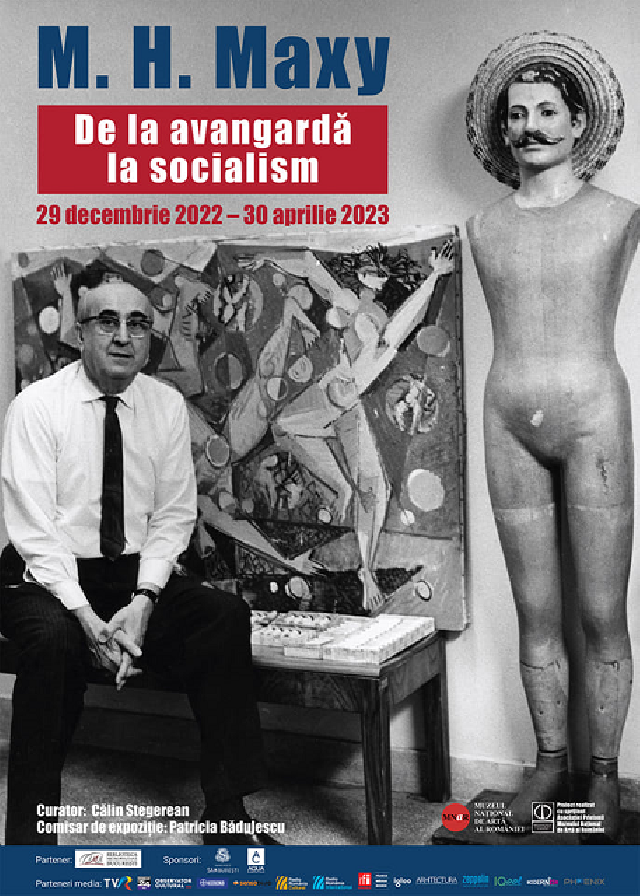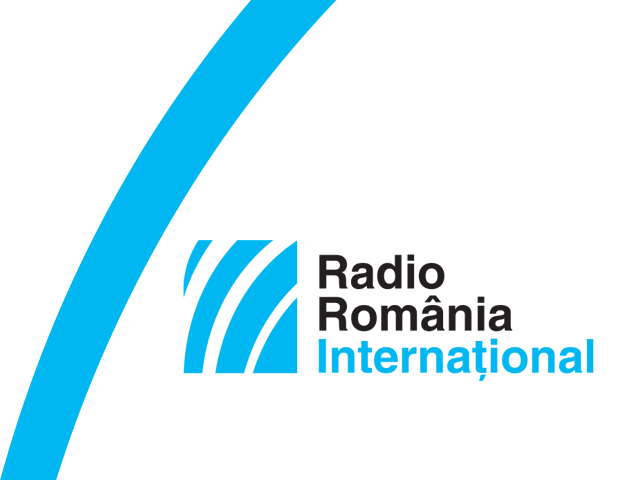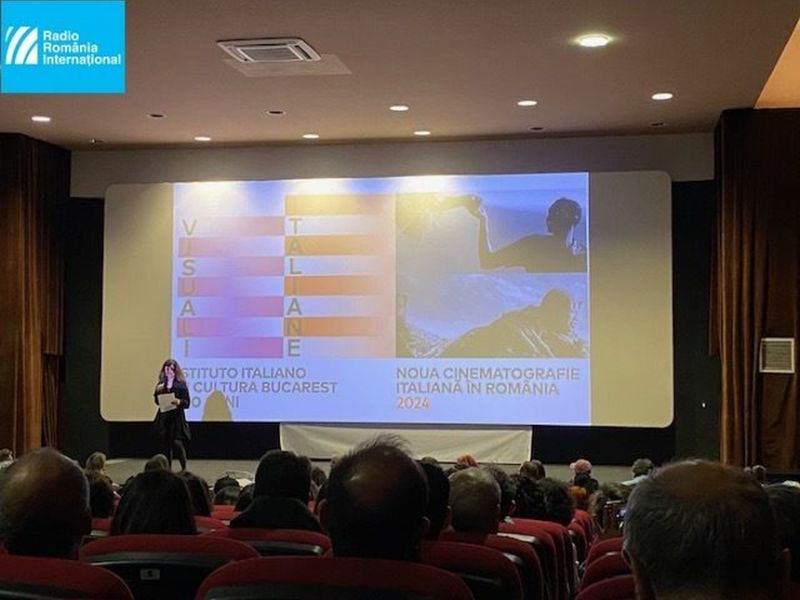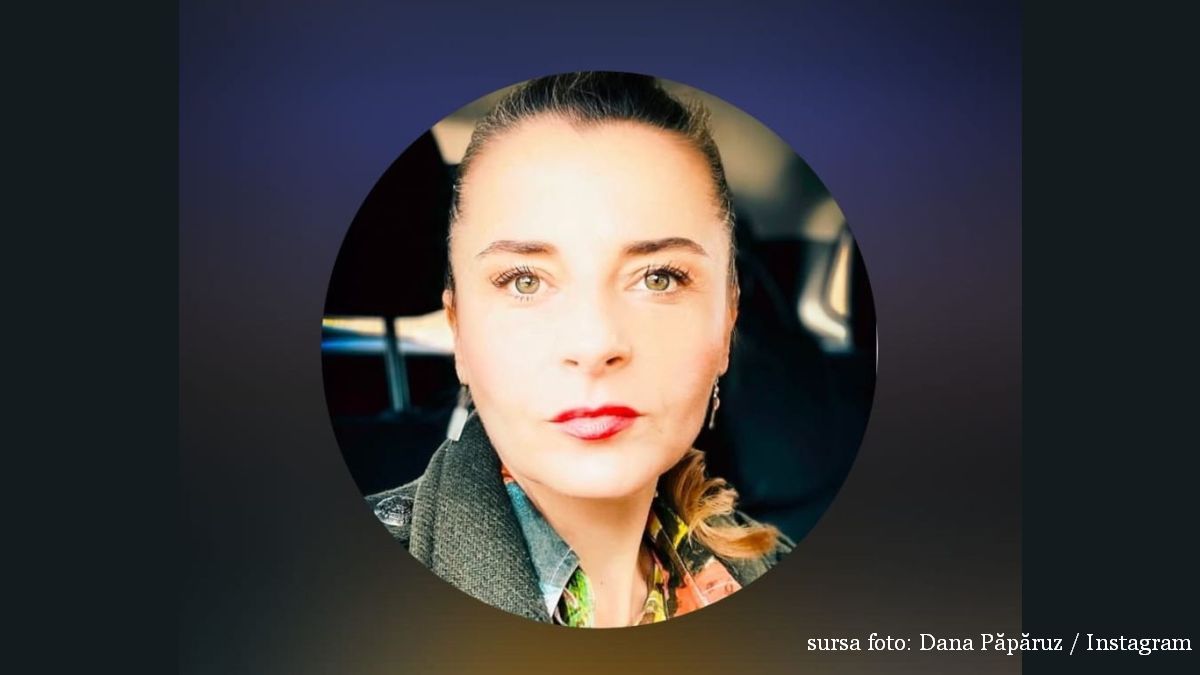The Max Herman Exhibition : From avant-garde to Socialism
The Romanian Art Museum is hosting, until the
end of April, a new exhibition: M.H. Maxy – From avant-garde to
socialism. Max Hermann Maxy (1895-1971) was a Romanian artist of Jewish
origin, a painter, stage designer, and university professor at the Institute of
Fine Arts. Maxy was one of the most important figures of the avant-garde in
Romania, the founder of the avant-garde magazine Integral, director
of the Romanian Art Museum.
Warning: Trying to access array offset on null in /home/web/rri.ro/public/wp-content/themes/rri/template-parts/content.php on line 53

Warning: Trying to access array offset on null in /home/web/rri.ro/public/wp-content/themes/rri/template-parts/content.php on line 98
Ion Puican,
21.01.2023, 12:09
The Romanian Art Museum is hosting, until the
end of April, a new exhibition: M.H. Maxy – From avant-garde to
socialism. Max Hermann Maxy (1895-1971) was a Romanian artist of Jewish
origin, a painter, stage designer, and university professor at the Institute of
Fine Arts. Maxy was one of the most important figures of the avant-garde in
Romania, the founder of the avant-garde magazine Integral, director
of the Romanian Art Museum.
A complex and powerful personality, but also controversial
and criticized, an artist who created in two distinct times: monarchical
Romania (until 1947) and Romania of the new communist regime (in the second
part of his life). The exhibition presents the artist’s work following the
chronological line of his biography, through paintings, graphics, stage design,
projects, art objects and magazines. We talked bout the exhibition and about
Maxy with the general manager of the Romanian Art Museum, Călin Stegerean, who is also the curator of the exhibition.
He was an exceptional figure of Romanian
art in the 20th century, primarily as a leader, the leader of the avant-garde
movement in the interwar period, the creator of an important avant-garde
magazine, Integral, and of a decorative arts workshop around this
magazine. He was also a very talented stage designer, and worked with various
avant-garde theater troupes. After the establishment of the communist regime,
he held leading positions in the state apparatus, for example, he was president
of the Plastic Fund, and in 1950 he became the director of the first national
art museum of Romania, called the Art Museum of the Romanian People’s
Republic. He supported the avant-garde movement, which he learnt about
primarily in Germany, where he studied and later became one of the organizers
of the great avant-garde art exhibitions in interwar Romania and a contributor
to all the avant-garde magazines of this period, as platforms where the visual
arts met with creation, with philosophy, with everything that meant the renewal
of the artistic language. He was very close to Marcel Iancu. Also, he was very
close to Tristan Tzara, for example, to Ilarie Voronca, Ion Călugăru, with whom
they collaborated on the magazine Integral, actually everything
that was the Romanian avant-garde. Basically, everything was in a very close
connection to everything, because the values and the elites recognized each
other and sought each other’s company. He became a member of the Communist
Party as early as 1942. It was a very troubled period, when the Jewish
population was persecuted, with actions that actually led, or aimed to lead to
the disappearance of the Jewish as an ethnic group. But the vanguard, in
general, brought together people with left-wing convictions. But the transition
to the recipe of socialist realism was done in a somewhat different way than
with other artists. He focused on the underprivileged in Romania. The 30-40s
are proof of this interest in workers, miners, those classes that were not
among the most favored. The exhibition itself, from a conceptual point of view,
takes into account the fact that he was active in two distinct but almost equal
periods: the monarchic period and the communist period, in which he was a
leading figure each time.In the
first part, obviously, he was the promoter of a renewal of the artistic
language that our culture needed, especially since it was also necessary to
connect with the international trends. And, in the second part, he gave signals
related to a certain freedom of creation, a certain freedom of representation,
which somehow brought him back to the elements of expression used in the
interwar period. Of course, without the same scope, without the same breath,
but the fact that these things were possible after a period of ideological
pressure and ideological dogmatism represented a very strong signal for the
guild colleagues.
Călin Stegerean also
told us about Maxy’s activity as head of Romania’s National Art Museum:
Maxy basically set up this museum. You
should know that the best painting repositories are those set up by Maxy in
this museum. He was also the one who, together with other colleagues,
configured the Romanian Art Gallery and the Universal Art Gallery. He also had
the idea of parallel activities, and
this aimed at the general culturalization of the public and the connection of
the arts with life in general.
At the opening
event, the president of the Jewish Communities Federation in Romania, Silviu
Vexler, also told us a few things about Maxy:
Maxy is one of the most complex
figures of Romanian art, but at the same time he is one of the most prominent
Jewish artists in Romania, along with Marcel Iancu, along with Victor Brauner;
thy are, if you like, the most visible symbols and the most easily recognizable
in terms of the presence of Jewish artists in Romania. At the same time, Maxy
is, as an artist, an extremely complex figure, whose creations vary greatly in
the context of the eras in which he worked. It is essential that when his
paintings are viewed, the context in which they were created and in which Maxy
worked is also presented. Even if he is such a prominent figure, at the same
time, unfortunately for the wider society, he is far, far too little known, and
then the fact that such an exhibition takes place at the National Art Museum is
a special chance for those who don’t know much about his work.
Silviu Vexler also told us about Maxy as a regular person, beyond the
avant-guarde artist:
I don’t think one can ignore the person
behind the artist. I think you can get to a point where you understand that
sometimes creation is not related to certain negative aspects of man, but you
can’t completely erase it. If you like, the most famous situation of this
nature is about Wagner. Even today, Wagner is an artist not only extremely
controversial, but, for example, in Israel I think there was only one concert.
At the same time, you can’t help but recognize Wagner’s creation as fundamental
to what opera stands for. However, I do not agree with attempts to erase the
negative aspects of a man’s life just because he was an artist. I believe that
the two aspect are complementary, they must be known in parallel and understood
at their true value. And at the end of the day, it is inevitable that what an
artist thinks will influence their work. That is why I would emphasize that the
added value of this exhibition dedicated to Maxy is that it presents all the
facets of his life. It’s not just a series of paintings on display, which would
have certainly been welcome as such, but the context of the society in which he
created, how his life evolved and transformed, and how they influenced his work
matters enormously. (MI)





























